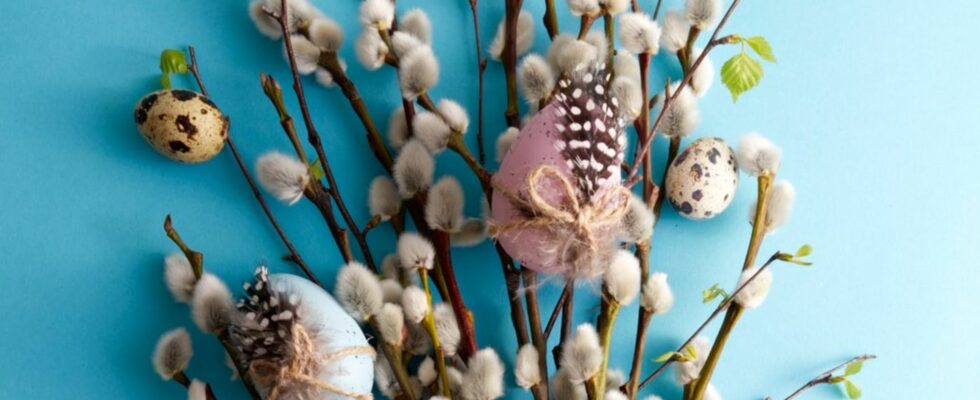Spring feelings in the living room
With these tips you can create the perfect Easter bouquet
Catkins and colorful eggs are part of the perfect Easter bouquet.
© Natalia Maliseva/Shutterstock.com
Easter bouquets with beautiful branches have a long tradition. With these tips you can make a homemade bouquet for Easter.
The first warm rays of sunshine, birdsong and colorful flowers not only herald the beginning of a new season, Easter is also just around the corner. A bouquet of beautiful branches and decorations has a long tradition at Easter and symbolizes the spring awakening of nature. Which branches are suitable and how do they stay fresh for a particularly long time? Here are tips for the perfect Easter bouquet.
The right branches for the Easter bouquet
The classic Easter branches are of course the palm or willow catkins. But forsythia, cherry, dogwood, birch and hazel branches also make good bases for a beautiful bouquet. However, anyone who suffers from hay fever or allergies should avoid the latter two. Some of the branches can be easily found in the garden or while walking in nature. To protect bees and other insects, it is better to buy catkin branches from a nursery – they are protected and must not be cut between March 1st and September 30th.
Cut the selected branches diagonally with a sharp knife and remove the lower buds so that they are not in the water. Then tie them together and place them in a vase or other large container with lukewarm water.
Create an additional spring atmosphere
In addition to twigs, an Easter bouquet also includes colorful flowers. The classic spring flower is the tulip in all its colors. Bright daffodils, delicate peonies, lush ranunculus, daffodils and hyacinths are also available from florists in spring. For a more subtle bouquet, one type of flower in different colors or two simple types is enough.
However, several types of flowers in different colors create an explosive floral display. Be sure to cut the stems and lower leaves of the individual flowers so that they stay fresh longer. Then the flowers can be placed in the vase with the branches, preferably on different levels so that the bouquet looks more voluminous.
The right decorative elements
To give the Easter bouquet that certain something, subtle decorative items should not be missing. For example, you can attach marbled or colored Easter eggs to the branches – ideally in subtle, natural colors so that they do not distract from the flowers. Colorful feathers or feather fluffs also make an eye-catcher in the Easter bouquet. Colorful ribbons also look good on the branches.
